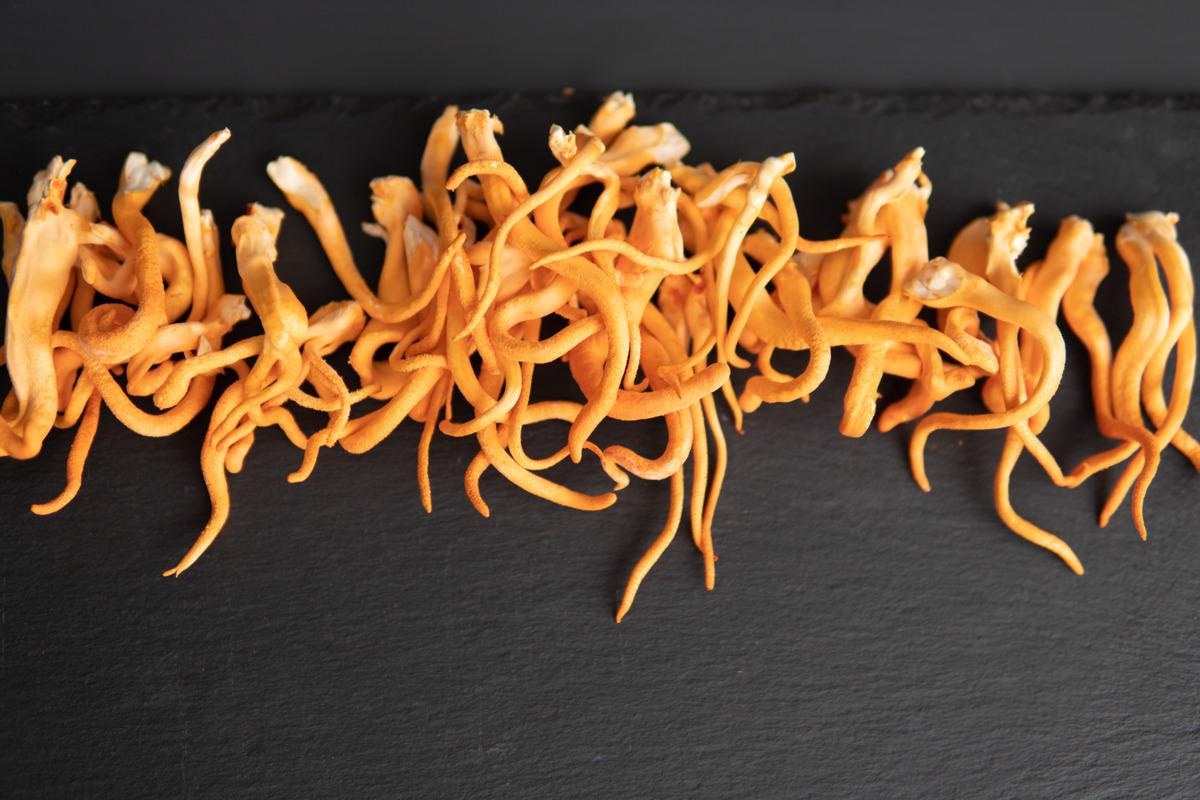In a recent study posted to the Research Square* preprint server, researchers conducted virtual screening and validation of molecules derived from mushrooms for their activity against the main protease (Mpro) of severe acute respiratory syndrome coronavirus 2 (SARS-CoV-2).
 Study: Screening and in Vitro Validation of Mushroom Derived Compounds Against SARS-CoV-2. Image Credit: Dmytro Tyshchenko/Shutterstock
Study: Screening and in Vitro Validation of Mushroom Derived Compounds Against SARS-CoV-2. Image Credit: Dmytro Tyshchenko/Shutterstock

 *Important notice: Research Square publishes preliminary scientific reports that are not peer-reviewed and, therefore, should not be regarded as conclusive, guide clinical practice/health-related behavior, or treated as established information.
*Important notice: Research Square publishes preliminary scientific reports that are not peer-reviewed and, therefore, should not be regarded as conclusive, guide clinical practice/health-related behavior, or treated as established information.
Although 2 years have passed since the emergence of SARS-CoV-2, the coronavirus disease 2019 (COVID-19) pandemic is still ongoing and remains a significant challenge to healthcare facilities worldwide. The subsequent emergence of heavily mutated SARS-CoV-2 variants and the lack of universally authorized therapeutic agents are responsible for the persistently increasing SARS-CoV-2-related cases and deaths. The SARS-CoV-2's Mpro is a well-known and important therapeutic target for developing drugs for COVID-19 therapy.
Mushrooms and their naturally derived compounds are well-known for their medicinal properties. They exhibit anti-inflammatory, antibacterial, and antiviral effects. In addition, the mushroom's antiviral potential is associated with a lower risk of adverse side effects. Yet, the impact of the mushroom-derived compounds in SARS-CoV-2 treatment is not well-explored.
About the study
In the current study, the researchers screened the SARS-CoV-2 Mpro binding affinity of various key components of C. militaris (a type of mushroom) and selected the one with the most affinity towards Mpro. The extent of cordycepin interaction with the Mpro was evaluated using molecular dynamics (MD) simulations.
Further, the backbone root-mean-square deviation (RMSD) was investigated to determine how the Mpro's carbon (Cα) backbone fluctuated with and without cordycepin. The solvent-accessible surface area (SASA) and radius of gyration (Rg) analyses were conducted to assess the level of structural compactness among the cordycepin bound and unbound Mpro complexes.
The team further performed principal component analysis (PCA) to explore the higher atomic motions patterns between the movements inside the cordycepin bound and unbound Mpro structures. Lastly, they mapped the free energy landscapes to get an in-depth understanding of the Mpro's cordycepin- and apo-bound structures.
Findings
The results show that the cordycepin from C. militaris was the most active molecule against SARS-CoV-2 Mpro with a 52.02 piecewise linear potential (PLP) score. The SARS-CoV-2 Mpro active site residues such as R188, D187, E166, H164, H162, N142, and H41 notably engaged in hydrogen bonding with cordycepin. Further, several additional Mpro sites also contributed to the molecule's accommodation by forming pi-cation or hydrophobic interactions.
After 70 and 60 ns in 100 ns MD simulations, the Cα backbones of the cordycepin- and apo-Mpro attained an equilibrium conformation, respectively. Across the rest of the time, the RMSD of both Mpro's apo and cordycepin bound structures remained constant. Although the backbone RMSD of both structures does not indicate a significant variation, a detailed inspection of Mpro's backbone RMSD following cordycepin and apo binding reveals the cordycepin-Mpro form to be less stable.
The cordycepin-Mpro's Rg was slightly higher compared to the apo form. This inference also endorses that the apo-Mpro was comparatively more stable than the cordycepin-bound Mpro. In addition, the SASA plot suggests a marginally higher SASA value for the cordycepin-Mpro structure. Thus, the findings of the SASA, Rg, and RMSD analyses were all in agreement. The root-mean-square fluctuation (RMSF) analysis reveals a distinct variation in residue fluctuation between the apo- and cordycepin-Mpro conformations.
According to the PC1 and PC2 projections, the cordycepin-Mpro structure demonstrates a less compact cluster of stable states. The PCA analysis also portrays that the Mpro structure with cordycepin has a higher level of internal motions than the apo form. This observation depicts that the apo-Mpro has higher stability and stiffness than the cordycepin-bound form.
The apo-Mpro form demonstrated slightly more stable conformation and was energetically favored than the cordycepin-Mpro complex while evaluating the projection of free energy. All these evaluations show that the cordycepin binding to SARS-CoV-2 Mpro causes a minor perturbation in its conformation and inhibits its activity.
Conclusions
According to the study findings, cordycepin was a promising therapeutic candidate for further exploration as an antiviral agent. In addition to being derived from an organic source, cordycepin has a 50% cytotoxic concentration (CC50) of greater than 50µM against SARS-CoV-2.
The CC50 of cordycepin was equivalent to the most used reference medicines like lopinavir and remdesivir. Cordycepin's half-maximal inhibitory concentration (IC50) was 29µM, approximately midway to its CC50. This inference was not strange since it was a natural molecule and not a drug by nature.
Cordycepin demonstrated a remarkable decrease in SARS-CoV-2 load at the various concentrations employed. The present findings need to be further validated utilizing relevant in vivo animal models and other subsequent procedures to identify a potential treatment approach for COVID-19.

 *Important notice: Research Square publishes preliminary scientific reports that are not peer-reviewed and, therefore, should not be regarded as conclusive, guide clinical practice/health-related behavior, or treated as established information.
*Important notice: Research Square publishes preliminary scientific reports that are not peer-reviewed and, therefore, should not be regarded as conclusive, guide clinical practice/health-related behavior, or treated as established information.